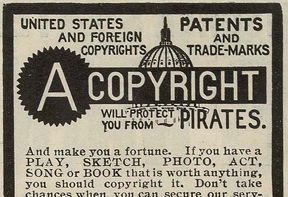Understanding Trade Marks in Fifteen Simple Steps
 Note that this is a UK/EU perspective and laws do vary across territories.
Note that this is a UK/EU perspective and laws do vary across territories.
1. A trade mark is anything that identifies the goods and services of a business or distinguishes them from those of another.
2. A registered trade mark gives statutory protection and an effective monopoly in respect of that mark for the goods or services it is registered for AND for similar marks with the same or similar goods where there is a likelihood of confusion. Well known registered trade marks have additional protection if used by others for different goods or services to those for which they are registered if that use takes unfair advantage of or is detrimental to the repute of the well known registered mark.
3. Marks that are not registered have common law protection through passing off - which occurs if a third party uses a trading name, style or get up that misrepresents a connection or association with the owner of goodwill in a business undertaken under or by reference to that trading name, style or get up and in doing so causes damage to the owner. That damage includes lost revenue that it would have received had the “infringer” entered into a licence agreement with the owner.
4. Certain trade marks can’t be registered and can’t be said to have sufficient goodwill for passing off. These include geographical indications, signs that designate the nature or intended use of the goods or services or are otherwise devoid of distinctive character and incapable of distinguishing the goods and services of one entity from those of another. For example Egg for eggs or Cake for cakes is a NO but Egg for financial services and Cake for PR is a YES.
5. Marks that are otherwise devoid of distinctive character can however be registered and can have goodwill in them if they become distinctive through the use made of them.
6. If you don’t use a registered trade mark for a continuing period of 5 years it becomes liable to be revoked.
7. If you don’t enforce your rights as a trade mark owner and don’t object to someone else’s use of your mark you can be considered to have acquiesced and lose the right to enforce - but this is more complex than it sounds.
8. You should apply to register your key brands as registered trade marks.
9. If you threaten someone with a registered trade mark infringement action without good grounds then you can be liable to pay damages for “groundless threats”.
10. It is a criminal offence to say a trade mark is registered when it isn’t.
11. Trade mark registration is territorial though a single European application can be made covering all countries of the EU.
12. Trade Marks are registered in respect of classes of goods and services. There are 45 different classes and when making an application you need to draft an appropriate specification in each class.
13. Making an application also gives 6 months priority in other territories so that additional applications can be made in other territories and back dated in that time.
14. A registration would last 10 years but can be renewed at that time.
15. Trade Mark registration is by far the best way to protect your brand but understanding trade marks is also important so that you don’t infringe someone else’s.
Picture courtesy of Ioan Sameli. Some rights reserved.


